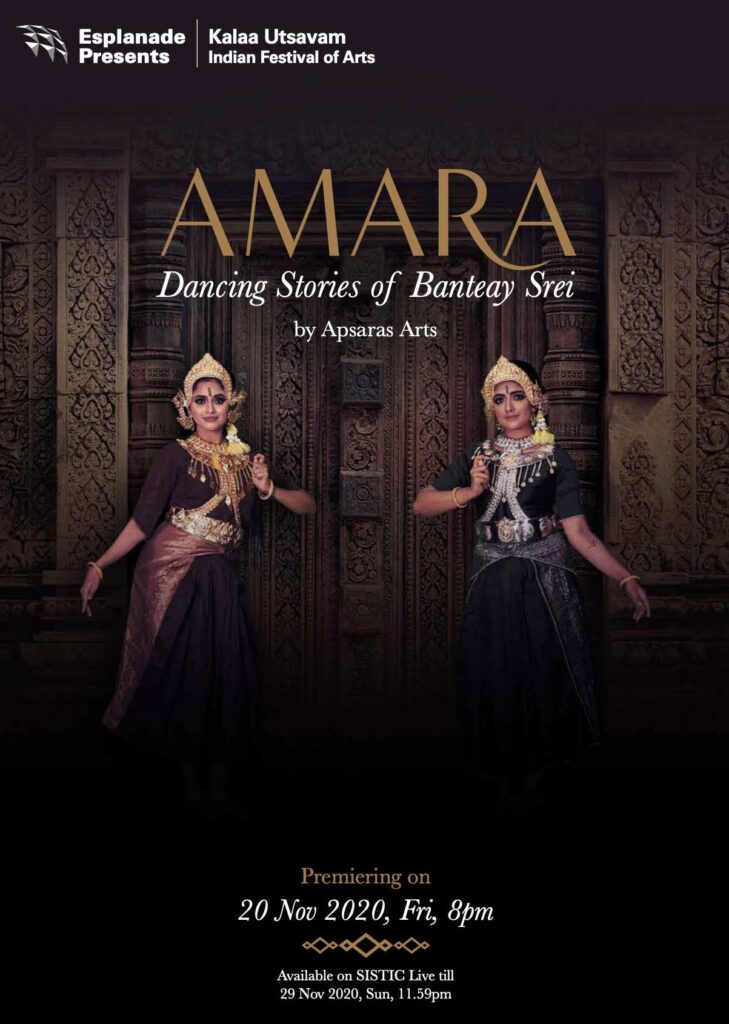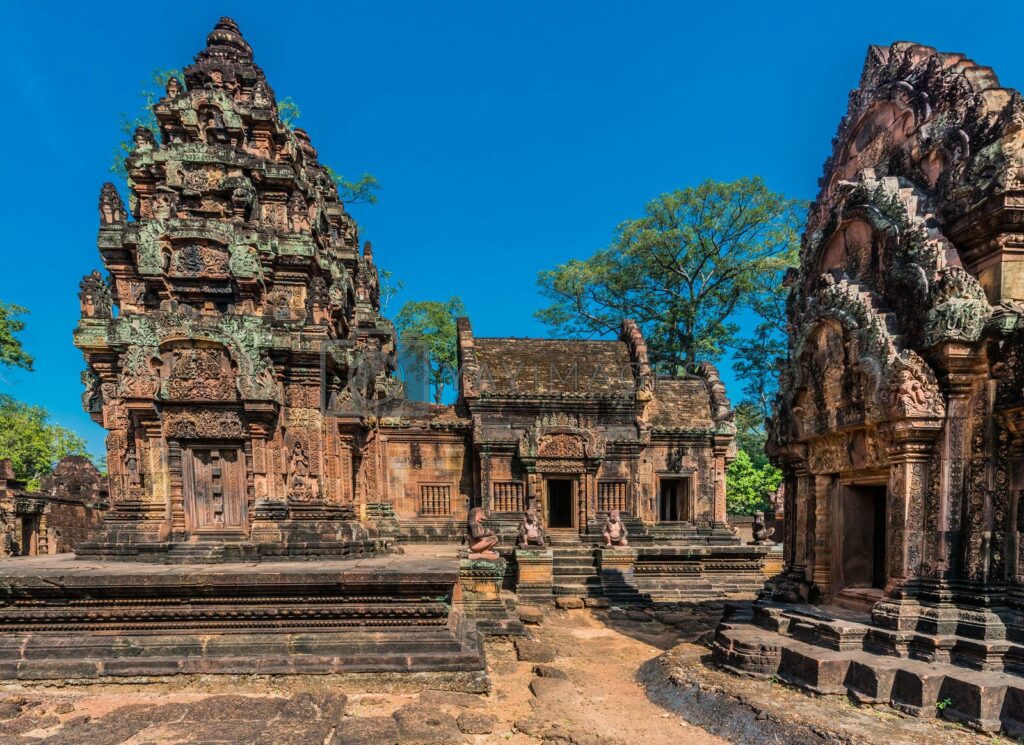AMARA: Dancing the Stories of Banteay Srei

Inspired by the legends and the stories carved in its bas reliefs of the enchanting temple of Banteay Srei, this dance production brings to life the female divine Yoginis of the temple, which was once called the “citadel for women.” Apsaras Arts Dance Company is proud to present this new production next month from November 20- 28th at the Kalaa Utsavam 2020 at Esplanade Theatres on the Bay. Get your tickets now! As a Curtain-Raiser Performance for Kalaa Utsavam 2020, next month, from 20th to 28th November 2020, Apsaras Arts is proud to present a brand new dance production, “Amara – Dancing the Stories of Banteay Srei.” This is a dance production inspired by the legends and the stories carved in its bas reliefs choreographed in Indian classical dance style of Bharatanatyam. The imagination of the choreography brings to life the female divine Yoginis of the temple, which was once called the “citadel for women”. The dancers evoke the characters from tales of the two Hindu epics – Ramayana and Mahabharata detailed in the temple’s pink stone walls. About Banteay Srei The enchanting temple of Banteay Srei holds a special charm that lies in its remarkable state of preservation, small size and excellence of intricate decoration. The unanimous opinion amongst French archaeologists who worked at Angkor is that Banteay Srei is a ‘precious gem’ and a ‘jewel in Khmer art’. Banteay Srei, as it is known by locals, was originally called Isvarapura, according to inscriptions. It was built by a Brahmin of royal descent who was spiritual teacher to Jayavarman V. Some describe it as being closer to architecture and decoration to Indian models that any other temple at Angkor. A special feature of the exquisite decoration was the use of a hard-pink sandstone (quartz arenite) which enabled the ‘technique of sandalwood carving with even an Indian scent to it’. The architecture is distinguished by triple superimposed frontons with relief narrative scenes carved in the tympanums, terminal motifs on the frames of the arches, and standing figurines in the niches. Panels are decorated with scenes inspired by Indian epics, especially the Ramayana and its execution has a liveliness not seen in the more formal decoration of earlier temples.


The temple was discovered by the French in 1914, but the site was not cleared until 1942. The theft of several important pieces of sculpture and lintels by a European expedition, meticulously planned by the young Frenchman, Malraux, caused a great scandal in 1923, but hastened the archaeological work. The thieves were held under house arrest in Phnom Penh and only released after the return of the stolen pieces. Banteay Srei is the first temple at Angkor to have been completely restored by the process of anastylosis, after the EFEO studied this method at Borobudur on the island of Java in Indonesia. Compared to the rest of Angkor this temple is in miniature. The doors of the central towers are narrow and barely one-and-a-half metres (five feet) in height. The quality of architecture and decoration make up for any shortcomings in size. As Maurice Glaize wrote, Banteay Srei is ‘a sort of “caprice” where the detail, of an abundance and incomparable prettiness, sweeps away the mass’. *This production is Apsaras Arts Dance Company’s core repertory work and premieres at Kalaa Utsavam 2020, annual performing arts festival curated and presented by Esplanade Theatres on the Bay, Singapore. In this year’s digital edition, AMARA will premiere on 20th November 2020 and remain available for viewing till 29th November 2020. Tickets go on sale from 20th October on SISTIC.










